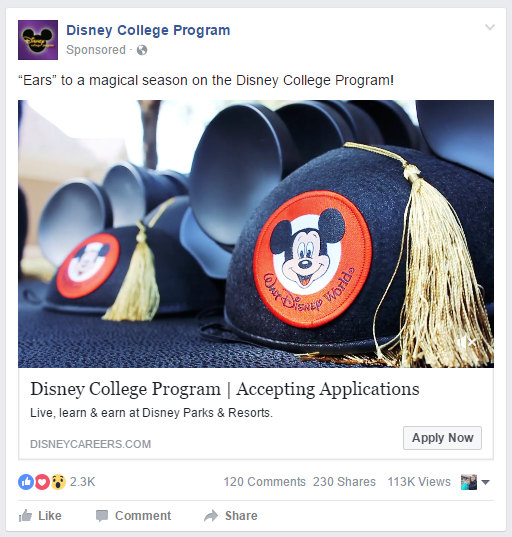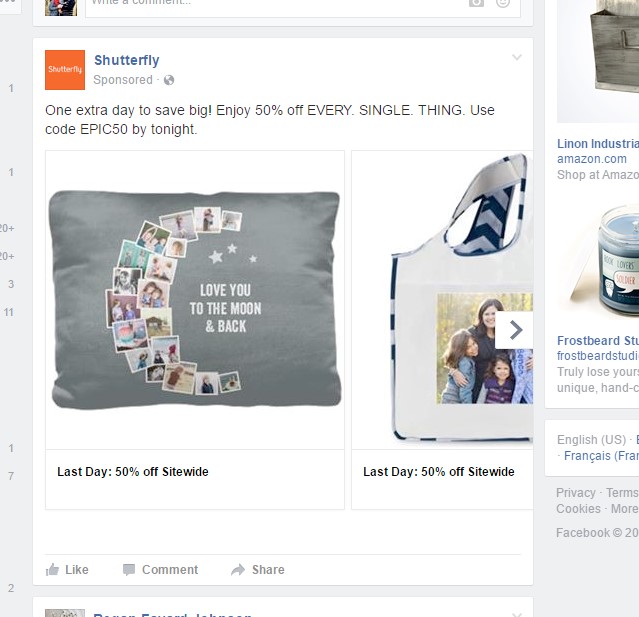How to Create Effective Facebook Ads and Landing Pages
As the digital clutter around us stacks higher and higher, most of us are getting pretty good at winding our way through it. But we are also increasingly accustomed to ads served to us in a native format, ads that look like they’re part of our social networking sites. These ads are smarter. They are based on our location, interests and search patterns. I don’t know about you, but I sort of like them. I admit I’m a bit of a lazy consumer, and if you can figure out what I like and what I might need and serve it to me in a catchy format, I’ll give your product a glance. I’m smart enough to pass on anything that’s a clear misfire. My daughter might be searching for cat T-shirts on my computer, but I’m not. I’ll pass, thanks. If the ad does catch my eye, that glance might turn into two and then a scroll, a click and possibly a purchase. So, what can you do to get your Facebook ads noticed and clicked on? Here’s how to serve me effective ads.

Creating Effective Facebook Ads
Target: Make sure you know exactly who you are targeting and why. It’s a waste of time and money to create eye-catching and well-worded ads if they are going out to the wrong audience. Don’t be one of those sure misfires that has your readers saying, “I’ll pass, thanks.” Facebook offers detailed targeting options to get your ads noticed by the right audience.
Design: Choose close-up, clutter-free, high-quality images and videos. Focus on people and experiences. Your images must tell the story of what’s being offered in one quick glance. Ensure that navigation is streamlined and easy to navigate, especially on mobile. Take time to get the design right and be willing to test multiple versions. Be rigorous about analyzing the tests. Have a clear tracking plan in place and regular review of the analytics over time so you can see which ones are getting clicks.
Facebook essentially does the work for you. Just upload multiple ad units, and the analytics will reveal, and serve up, the ads that connect best with users.

Type: Test different types of Facebook ads, from boosted posts to right column ads. You may find one works best for certain demographics and products or that variety is your ticket to success.
Relevant: Make your ad relevant to a clearly defined user and provide a clear call-to-action. The image and ad copy should pre-emptively provide an answer to “What’s in it for me?” Can they get a free trial? Is this a limited time offer? Do they get a discount?
Consistency: Don’t accidentally pull the old bait and switch. If your Facebook ad features a stylish black purse, you better make sure the exact stylish black purse is clearly identifiable on the ad’s linked landing page. If you offer a discount in your ad, that discount needs to be clearly clickable on the landing page.
De-risk Involvement: Use testimonials to help the reader feel safe. Reading the specifics on other people’s experiences with your product de-risks the decision-making process. You can also use free trials, money back options or extra product offerings to lessen the feeling of risk consumers bring to the table.
Regionality: Switch up your ads for distinct regions. Selling to the South in the US? It’s okay to respectfully use the regional dialect. Selling to Silicon Valley? Engage the geeks. Consider the unique habits, needs and preferences (and languages!) of your target market in each region.

Creating Effective Landing Pages
First-class landing pages have many of the star qualities as high-performing Facebook ads. Take time to prepare your landing page in terms of both content and tracking. If you have done all the work to get people through the door via the Facebook ad, you don’t want them leaving before they’ve had time to settle in and take a look around.
Goal: Know what you want people to do when they hit your landing page, and make that task very easy for them. The call-to-action should be clear and above-the-fold, and it should incentivize the customer to take the steps you want.
Design: Keep it engaging, streamlined and simple. Don’t turn the page into a cluttered menu of everything you offer. Keep the spirit of the landing page design the same as the spirit of the ad(s) that brought users. Navigation should be intuitive and simple. Test the site with people who don’t know anything about your product or company. This type of testing reveals the flaws.
Consistency: Make sure the design, ad copy and products on the landing page are in sync with the ad(s) that delivered visitors to the landing page.
Interaction: Offer sharing buttons and a place for reviews. This creates the opportunity for dialogue and builds trust.
Revise Strategy: Facebook analytics provide you with more and more information about how to best market your product. Every day the system is able to gather data, from your ads and the thousands of other ads it facilitates, to provide insight into what connects with consumers.
Start simple and follow these basic practices to reap rewards on your Facebook ads and corresponding landing pages. To find out more about how you can really connect with customers through Facebook ads, contact Brice Bay of EnVeritas Group at bbay@evgmedia.com.



